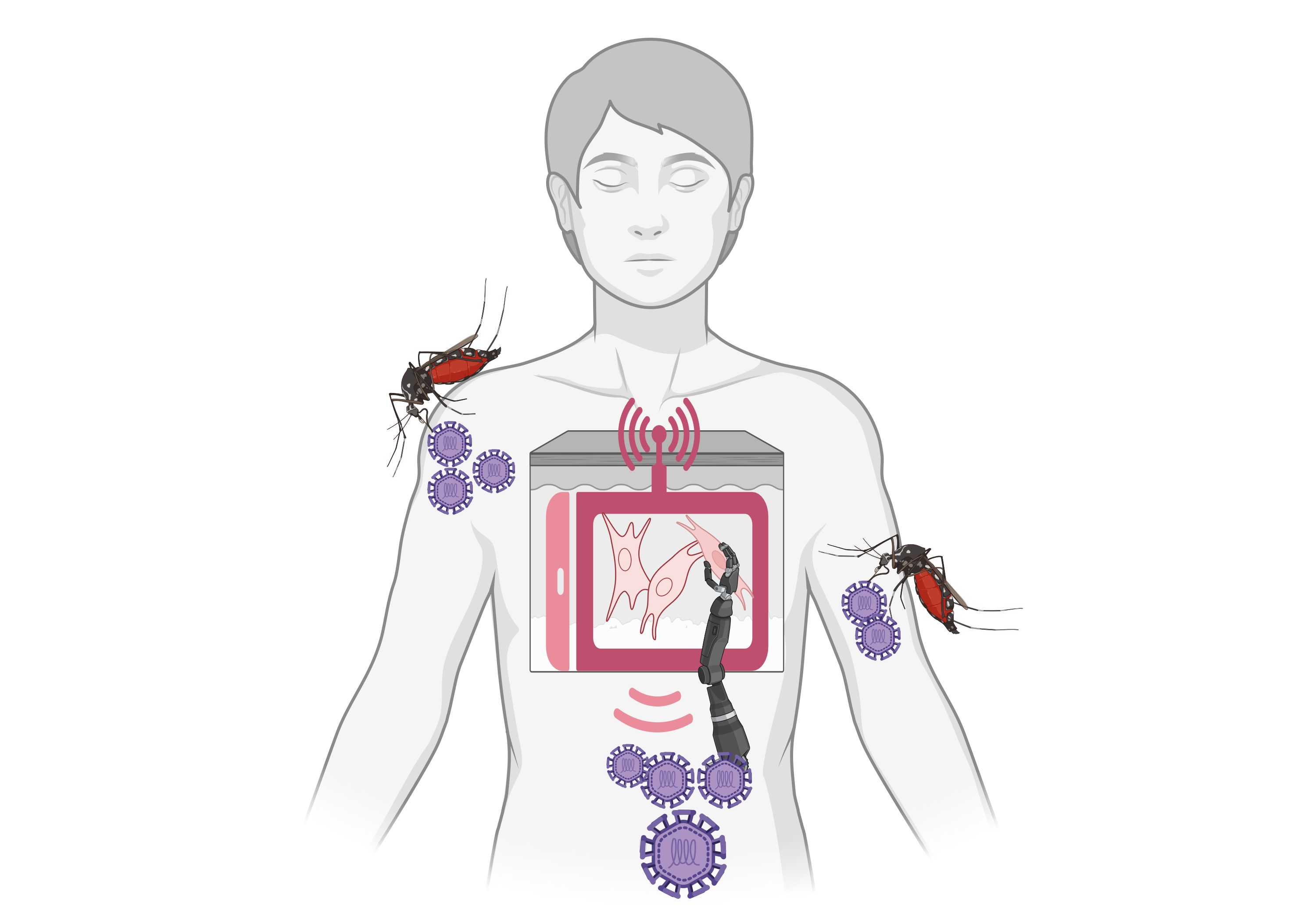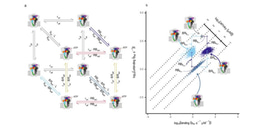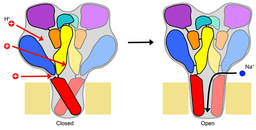Human Skin: A Semi-Smart Tele-communication Tool for Viral Transmission
Published in Microbiology, Cell & Molecular Biology, and Genetics & Genomics

The rapid spread of Aedes aegypti mosquitoes is a global crisis. These invasive, virus-bearing vectors have turned entire regions into hotspots for diseases like dengue, chikungunya, and the infamous Zika virus (ZIKV). Once confined to tropical areas, Zika has now been reported in 92 countries, with cases surfacing even in Europe. Climate change, urbanization, and international travel have given Aedes mosquitoes the perfect opportunity to colonize new territories, bringing the threat of Zika to our doorsteps.
But how does Zika virus achieve such remarkable transmission success? The answer may lie in an unexpected collaboration: our own skin.

The Virus-Skin-Mosquito Connection
Imagine your skin as a semi-smart, biochemical telecommunication tool. It turns out that when ZIKV infects human cells, it doesn't just sit quietly and multiply—it takes over, altering the very signals your skin emits to the world. Human skin fibroblasts, which are responsible for maintaining the structural integrity of the skin, produce a range of metabolites. Under ZIKV’s influence, these cells ramp up the production of mosquito-attractive volatile organic compounds (VOCs).
In other words, ZIKV transforms human skin into a beacon that lures mosquitoes. This isn’t a random occurrence; it’s an evolved survival strategy by the virus. By ensuring that infected individuals attract more mosquitoes, ZIKV dramatically increases its chances of jumping to the next host and continuing its relentless spread.
The Science Behind Viral Manipulation
Our research sheds light on how ZIKV hijacks the skin’s machinery. Within hours of infection, ZIKV alters gene and protein expression in dermal fibroblasts, triggering metabolic changes that affect VOC product ion. During the early stages of infection (the invasion stage), the virus selectively tweaks VOC levels—some increase, while others decrease. At the later stages (the transmission stage), the virus flips the switch entirely, leading to a significant boost in all VOC emissions.
These altered emissions create a mosquito-magnet effect, drawing Aedes aegypti mosquitoes straight to infected hosts. The findings are further reinforced by cutting-edge meta-proteome analysis, which provides a detailed look at the virus-host interactions at play.
What Does This Mean for Us?
This discovery uncovers a chilling reality: ZIKV isn’t just passively transmitted; it actively manipulates human biology to ensure its survival. Our skin, once a protective barrier, becomes an unwitting accomplice in the virus's global conquest. As Zika cases rise and Aedes mosquitoes expand their range, understanding these mechanisms could unlock new strategies for combating arboviruses. Could we develop interventions that disrupt this mosquito-attractive signal?Could wearable technologies mask the VOCs emitted by infected individuals? The possibilities are as intriguing as they are urgent.
A Call to Action
The spread of Zika and other arboviruses highlights the intricate and unsettling ways viruses exploit both humans and insects to survive. As we grapple with the challenges posed by climate change and global mobility, it’s crucial to stay one step ahead of these microscopic invaders.
For now, one thing is clear: our skin, a faithful defender of our bodies, can also be a messenger for viruses, broadcasting an invisible SOS that keeps the Aedes mosquitoes—and the viruses they carry—circulating around the globe.
These authors jointly supervised this work: Profs Gisa Gerold and S. Noushin Emami
Follow the Topic
-
Communications Biology

An open access journal from Nature Portfolio publishing high-quality research, reviews and commentary in all areas of the biological sciences, representing significant advances and bringing new biological insight to a specialized area of research.
Related Collections
With Collections, you can get published faster and increase your visibility.
Cancer Cell Atlases
Publishing Model: Open Access
Deadline: Jan 15, 2026
Lipids in Cell Biology
Publishing Model: Open Access
Deadline: Mar 03, 2026




Please sign in or register for FREE
If you are a registered user on Research Communities by Springer Nature, please sign in